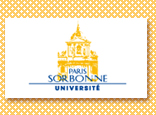| Summary:
These webpages study the vision of space, and the various ways
in which it has been structured in successive centuries; each topic
is illustrated by a famous landscape. The analyses of these examples
make use of the visual effects of webdesign : the dynamic aspects
of the spatial vision, such as the imaginative superimposition of
several landscapes, are modelled by interactive events made possible
by the web interface, such as the "swapping images" behaviour triggered
off when the user clicks on a button.
Taken together, these chapters study various forms of interaction
between real places and imaginary views - the past forms of "virtual"
perception. They are also an introduction to the range of effects
available in dynamic web design, placed in sequence of increasing
difficulty as the more imaginative types of landscape vision are
explored .
Structure:
Each chapter is subdivided into three sections, with names borrowed
from the theatre; they take up the old metaphor of the "landscape
as a theatre" to trace the history of modes of vision.
- "the stage", a descriptive page, containing views of historical
landscapes and cityscapes with comments on the perception of space
they imply. As on a stage, scene-shifting effects are possible,
which alter the view; they are here modelled by dynamic web design
(instructions on the possible interactions are given on the pages).
These pages have a yellow background, the colour of a prospect
bathed in light, suggesting a spatial structure.
- "scene design", a "how to do it" page, which explains how the
interactive effects of the "stage" pages were obtained with a
web-design software; it contains screenshots of the design screens.
It is on a white background so that the screenshots stand out
clearly.
- "theatre of icons", interpretative comments and questions on
the perception of space, with links to websites of various fields
(the semiotics of space, theories of iconicity...). It is on a
blue-green background, which are meditative colours suggesting
depth.
The navigation bar below allows the user to navigate between these
three sections. |



